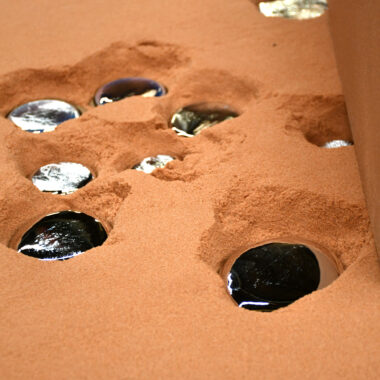About Aluminum Casting Chronicles: Techniques, Fads, and Tips
Wiki Article
Opening the Prospective of Aluminum Casting: Proven Methods for Success
Light weight aluminum casting has long been recognized for its convenience and widespread applications across different sectors - about aluminum casting. Nonetheless, uncovering the full capacity of this process needs greater than simply standard expertise. By implementing proven techniques developed with years of market experience and advancement, makers can raise their aluminum casting operations to new heights of performance and top quality. From maximizing layout factors to consider to enhancing manufacturing procedures, the crucial depend on taking advantage of these techniques successfully. Join us as we explore the essential elements that can propel light weight aluminum spreading towards unrivaled success in today's competitive market landscape.Benefits of Aluminum Spreading
Aluminum spreading provides a multitude of benefits that make it a preferred option in various commercial applications. Among the primary advantages of aluminum spreading is its lightweight nature, which adds to fuel effectiveness in industries such as vehicle and aerospace. Additionally, light weight aluminum is very malleable, permitting for elaborate and intricate forms to be quickly generated through casting procedures. This versatility in style is a substantial advantage for markets that require elements with details geometries.In addition, light weight aluminum casting provides outstanding rust resistance, making it suitable for applications where direct exposure to rough environments is a concern. The material also exhibits good thermal conductivity, which is advantageous for markets requiring heat dissipation, such as electronics (about aluminum casting). Additionally, aluminum is fully recyclable, aligning with the expanding focus on sustainable methods in modern manufacturing.
Style Considerations for Casting
The style phase plays a critical function in the overall success of a light weight aluminum spreading project. One crucial factor to consider is the option of proper geometries and features that help with the casting process.Moreover, factors to consider associated with parting lines, gating systems, and risers are important to avoid issues like porosity and shrinking. It is important to optimize the design for effective product usage and minimize post-processing needs. Simulations and prototyping can be beneficial tools in refining the casting and examining style before major manufacturing.
Cooperation in between design factories, engineers, and suppliers is essential to deal with any type of possible challenges early in the style stage. By integrating these factors to consider into the spreading style process, manufacturers can boost item high quality, decrease expenses, and ultimately unlock the complete possibility of aluminum casting.
Enhancing Casting Effectiveness
Creating with an emphasis on optimizing material flow and lessening defects is crucial when intending to improve casting efficiency in aluminum spreading projects. To achieve this, using simulation software can aid in determining prospective issues prior to the casting process starts. By imitating the circulation of molten light weight aluminum, developers can readjust gating and riser layouts to ensure correct dental filling and solidification, ultimately minimizing the incident of problems such as porosity or contraction.
Moreover, executing appropriate warmth therapy procedures can boost the total casting effectiveness. Warm therapy can help enhance the mechanical buildings of the light weight aluminum spreading, making certain that the last element meets the needed requirements. In addition, employing automation and robotics in the spreading procedure can simplify manufacturing, reduce hands-on labor, and rise overall performance.
In addition, continuous tracking and high quality control during the casting process are crucial for recognizing any kind of variances and ensuring that the end products meet the wanted standards. By carrying out these approaches, manufacturers can boost More hints casting performance, enhance item quality, and ultimately achieve higher success in light weight aluminum spreading projects.
Quality Control in Aluminum Casting

Reliable top quality control techniques play a pivotal function in guaranteeing the precision and integrity of aluminum casting procedures. Quality control actions in light weight aluminum spreading encompass a range of tasks intended at maintaining certain standards and determining inconsistencies that could endanger the final item.
In enhancement to process control, top quality control in light weight aluminum spreading involves strenuous screening and assessment procedures at numerous phases of production. By applying robust top quality control practices, light weight aluminum spreading centers can provide products that satisfy client assumptions for efficiency, top quality, and dependability.
Making Best Use Of Profitability
To achieve ideal economic performance, an extensive approach for making the most of productivity within aluminum Click Here spreading operations have to be carefully designed and performed. One essential facet of taking full advantage of success in aluminum casting is enhancing production effectiveness.
Additionally, diversifying product offerings and discovering new markets can aid expand profits streams. Comprehending client needs and market trends can assist tactical decisions to take advantage of on emerging opportunities. Buying r & d to introduce products or processes can likewise drive earnings through differentiation and consumer complete satisfaction.
Final Thought
In conclusion, aluminum casting supplies many benefits in terms of style adaptability, cost-effectiveness, and toughness. By very carefully thinking about design factors to consider, improving casting efficiency, implementing quality assurance actions, and making the most of earnings, manufacturers can open the complete capacity of light weight aluminum casting. This versatile and trustworthy procedure has actually verified to be an effective option for a wide variety of commercial applications.In addition, light weight aluminum is extremely malleable, allowing for intricate and intricate forms to be easily produced via spreading procedures.Reliable quality control techniques play a pivotal duty in making sure the precision and dependability of light weight aluminum spreading procedures.In addition to process control, quality control in aluminum casting entails strenuous screening and evaluation treatments at various phases of production. By executing robust high quality control techniques, aluminum spreading facilities can provide items that satisfy consumer expectations for high quality, efficiency, and dependability.
By meticulously thinking about layout factors to consider, improving casting effectiveness, applying quality control steps, and making best use of success, manufacturers can unlock the full potential of aluminum casting.
Report this wiki page